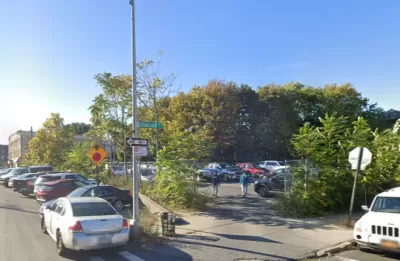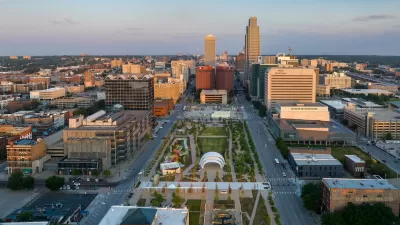A new map reveals how much land in New York City is being wasted by city police—often sitting vacant, rather than serving the public good.

Land is a treasured asset in New York City; much of it has already been developed, and the few undeveloped lots are highly sought after. But the city’s various agencies also own vacant parcels in various states of use. Constructing housing on these lots would be far cheaper than acquiring land on the private market.
At least 145 of these lots are used by the New York City Police Department to park their vehicles, leading some organizers to ask: is parking more important than housing?
A new interactive map by the East New York Community Land Trust shows where NYPD-owned vacant lots and parking lots are across the city. It’s part of an ongoing campaign to get the NYPD and other city agencies to turn the lots—some empty, some filled with junk and derelict vehicles, and many used for NYPD members’ personal vehicles—over to local community land trusts.
The map, released as part of a new “digital blackpaper,” is intended to be a tool for local communities to find out where the NYPD is sitting on land that could theoretically be turned over for public use. “Part of the purpose of the digital map is to inspire organizing across the issue,” says Brianna Soleyn of East New York Community Land Trust.
The blight of abandoned lots has long been a point of grievance for residents of East New York, who have dealt with vacant lots since at least the 1970s, when the city was facing a fiscal crisis and some officials argued for reducing services in blighted neighborhoods.
Rolling over each NYPD icon on the map presents a pop-up that tells users what city agency currently operates the lot.
FULL STORY: New Yorkers Need Land. The NYPD Is Sitting On Nearly 150 Lots.

Planetizen Federal Action Tracker
A weekly monitor of how Trump’s orders and actions are impacting planners and planning in America.

Congressman Proposes Bill to Rename DC Metro “Trump Train”
The Make Autorail Great Again Act would withhold federal funding to the system until the Washington Metropolitan Area Transit Authority (WMATA), rebrands as the Washington Metropolitan Authority for Greater Access (WMAGA).

The Simple Legislative Tool Transforming Vacant Downtowns
In California, Michigan and Georgia, an easy win is bringing dollars — and delight — back to city centers.

The States Losing Rural Delivery Rooms at an Alarming Pace
In some states, as few as 9% of rural hospitals still deliver babies. As a result, rising pre-term births, no adequate pre-term care and harrowing close calls are a growing reality.

The Small South Asian Republic Going all in on EVs
Thanks to one simple policy change less than five years ago, 65% of new cars in this Himalayan country are now electric.

DC Backpedals on Bike Lane Protection, Swaps Barriers for Paint
Citing aesthetic concerns, the city is removing the concrete barriers and flexposts that once separated Arizona Avenue cyclists from motor vehicles.
Urban Design for Planners 1: Software Tools
This six-course series explores essential urban design concepts using open source software and equips planners with the tools they need to participate fully in the urban design process.
Planning for Universal Design
Learn the tools for implementing Universal Design in planning regulations.
Smith Gee Studio
City of Charlotte
City of Camden Redevelopment Agency
City of Astoria
Transportation Research & Education Center (TREC) at Portland State University
US High Speed Rail Association
City of Camden Redevelopment Agency
Municipality of Princeton (NJ)





























